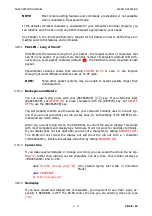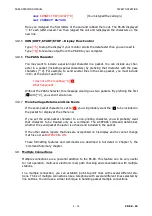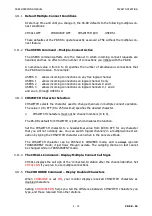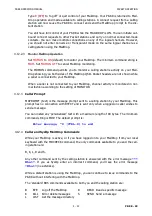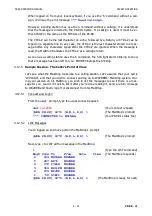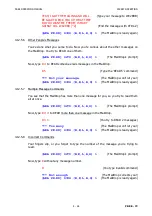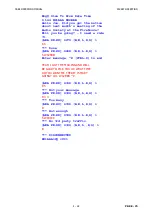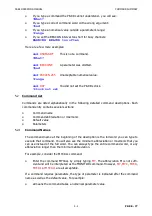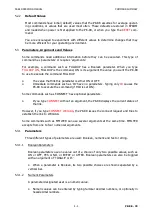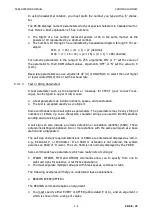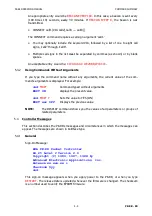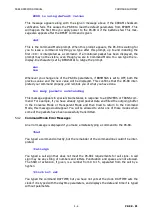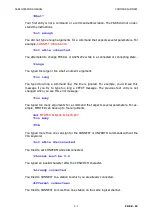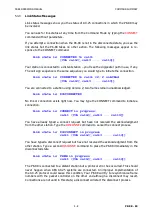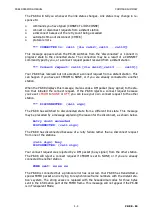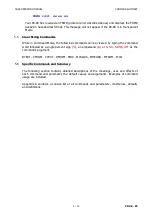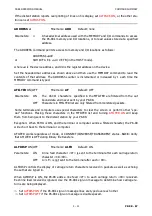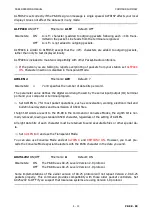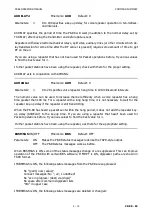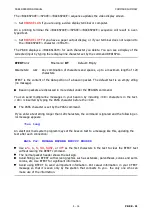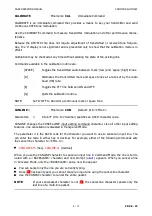
PK-88 OPERATING MANUAL
COMMAND SUMMARY
5 - 3
PK-88 - 78
5.2.2
Default Values
Most commands have initial (default) values that the PK-88 assumes for average operat-
ing conditions, or values that are used most often. These defaults are stored in EPROM
and loaded when power is first applied to the PK-88, or when you type the
RESET
com-
mand.
You are encouraged to experiment with different values to determine changes that may
be more efficient for your operating environment.
5.3
Parameters, Arguments and Values
Some commands need additional information before they can be executed. This type of
command has 'parameters' or requires 'arguments'.
For example, a command such as FULLDUP has a Boolean parameter. When you type
FULLDUP ON
, FULLDUP is the command, ON is its argument the value you want the PK-88
to use to execute the command FULLDUP.
o
The value that fills this parameter is either ON or OFF.
o
Immediate commands such as 'ID' have no parameters. Typing only
ID
causes the
PK-88 to execute the command (if HID is set ON).
Some commands such as 'CONNECT' have optional parameters.
o
If you type
CONNECT
without an argument, the PK-88 displays the current status of
the link.
However, if you type
CONNECT WX1AAA
, the PK-88 issues the connect request and tries to
establish the link to WX1AAA.
Some commands such as MFILTER can use several arguments at the same time. MFILTER
accepts from one to four numerical arguments.
5.3.1
Parameters
Three different types of parameters are used: Boolean, numeric and text or string.
5.3.1.1
Boolean Parameters
Boolean parameters use one value out of a choice of only two possible values, such as
ON or OFF, YES or NO, or EVERY or AFTER. Boolean parameters can also be toggled
with an argument of 'TOGGLE' or IT.'
o
When a parameter is Boolean, its two possible choices are shown separated by a
vertical bar.
5.3.1.2
Numeric Parameters
A parameter designated as
n
is a numeric value.
o
Numeric values can be entered by typing familiar decimal numbers, or optionally in
hexadecimal numbers.

